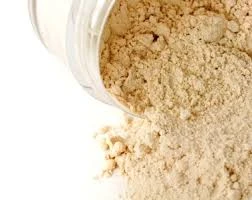Functional Fillers for Plastics Enhancing Performance and Sustainability
Plastics have revolutionized countless industries, offering versatility, lightweight characteristics, and cost-effectiveness. However, to further enhance their properties and broaden their applications, the incorporation of functional fillers has become a prevalent strategy. Functional fillers are additives integrated into plastic formulations to improve mechanical, thermal, or processing characteristics while also providing additional functionalities. This article delves into the various types of functional fillers used in plastics, their benefits, and emerging trends within the industry.
Types of Functional Fillers
Functional fillers can be categorized into several groups based on their properties and the enhancements they provide. Some of the most common types include
1. Mineral Fillers These include talc, kaolin, calcium carbonate, and magnesium hydroxide. Mineral fillers enhance stiffness, tensile strength, and thermal stability. They can also reduce production costs significantly due to their low price and availability.
2. Glass Fibers Widely utilized for improving mechanical properties, glass fibers are particularly effective in reinforcing thermoplastics and thermosets. They help in increasing the strength and rigidity of the plastic, making it suitable for demanding applications in automotive and construction industries.
3. Carbon Black and Silica Often used in rubber and plastics, carbon black serves as a reinforcing agent and UV stabilizer. Silica, on the other hand, improves the material's toughness and wetting properties. Both fillers contribute to the durability of the final product.
4. Bio-based Fillers With sustainability becoming a key focus, bio-based fillers such as wood flour, kenaf, and hemp fibers are gaining traction. These not only reduce the environmental impact of plastic production but also enhance biodegradability, making them a favorable choice for eco-conscious manufacturers.
5. Conductive Fillers Materials such as carbon nanotubes and metallic powders are used to create electrically conductive plastics. These conductive fillers are essential in various electronic applications, including circuit boards and EMI shielding.
6. Flame Retardants Certain fillers are designed to improve the flame resistance of plastics. Compounds such as aluminum trihydrate and magnesium hydroxide can be incorporated to achieve this, ensuring compliance with safety regulations in construction and electronics.
Benefits of Functional Fillers
functional fillers for plastics

The addition of functional fillers to plastic formulations offers several advantages
- Improved Mechanical Properties Fillers can significantly enhance the strength, toughness, and rigidity of plastics, making them more durable and suitable for a wider range of applications.
- Cost Reduction By partially replacing more expensive polymer resins with fillers, manufacturers can lower production costs while maintaining acceptable performance levels.
- Thermal Stability Fillers like glass fibers and mineral additives can improve the thermal stability of plastics, enabling them to withstand higher temperatures without deforming.
- Enhanced Aesthetic Qualities Certain fillers, such as mica or talc, can improve the surface finish of plastics, providing a more appealing look suitable for consumer products.
- Sustainability The use of bio-based fillers not only reduces reliance on fossil fuels but also appeals to a growing market of environmentally-conscious consumers.
Emerging Trends and Challenges
The market for functional fillers in plastics is evolving, driven by innovations in material science, sustainability initiatives, and regulatory pressures. As industries strive to meet stringent environmental standards, the demand for environmentally friendly and recyclable materials is increasing. Innovations in biodegradable fillers are expected to play a crucial role in the future landscape of plastic manufacturing.
However, challenges such as the compatibility of fillers with various polymers, processing difficulties, and cost considerations still exist. Ongoing research is focused on developing advanced filler technologies that enhance the performance of plastics while addressing these challenges.
In conclusion, functional fillers for plastics represent a significant area of innovation, playing a critical role in enhancing the performance and sustainability of plastic materials. As industries continue to evolve, the strategic use of these fillers will be central to meeting future demands for durability, cost-effectiveness, and environmental responsibility. The integration of functional fillers not only improves the properties of plastics but also paves the way for more sustainable materials in the marketplace.

